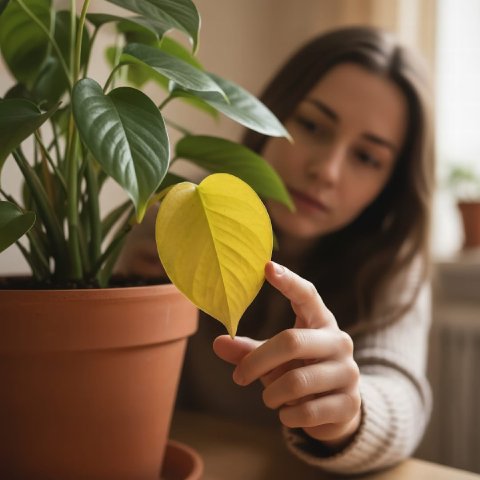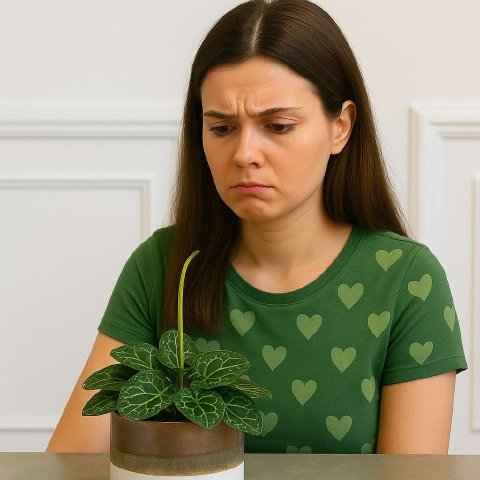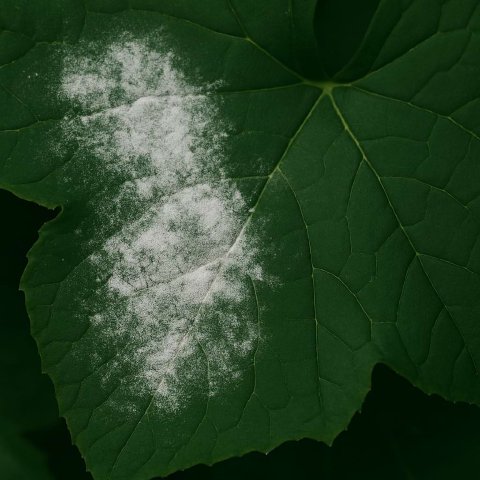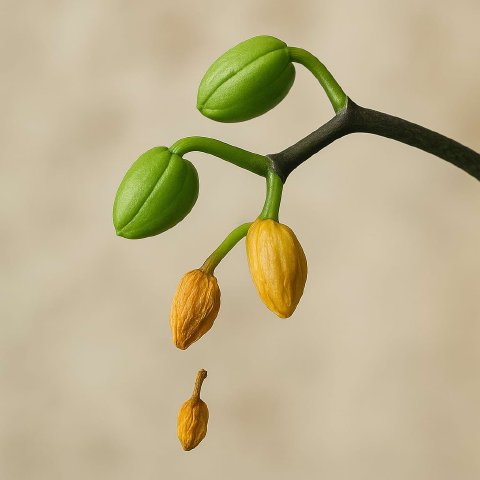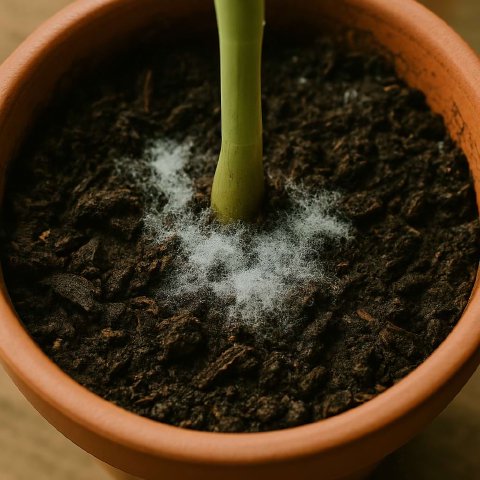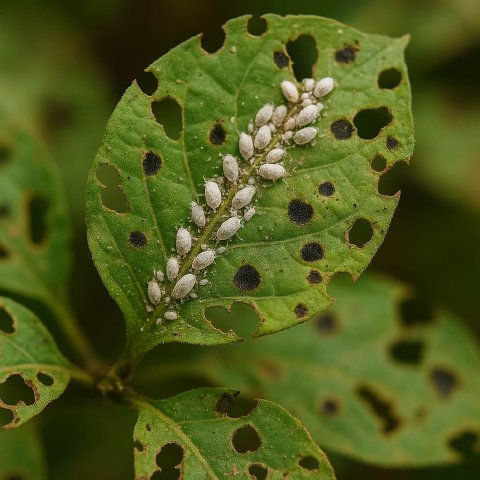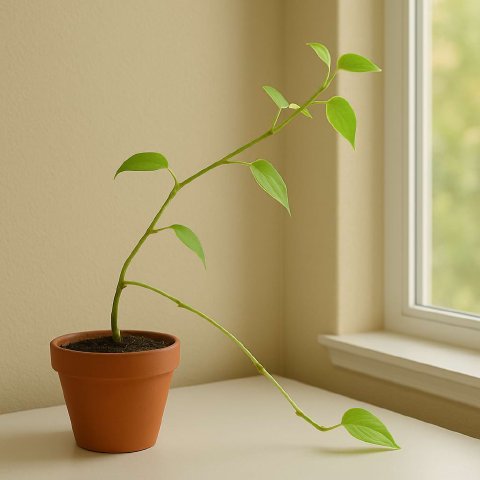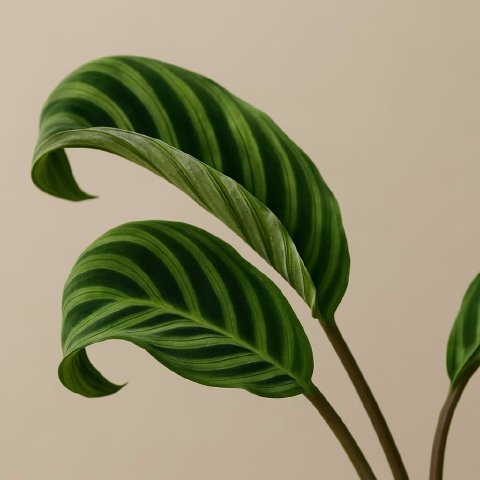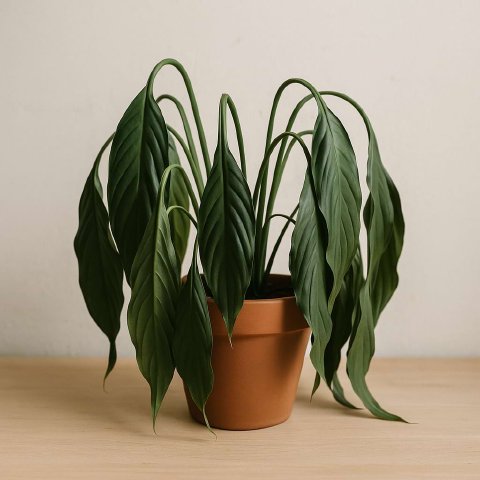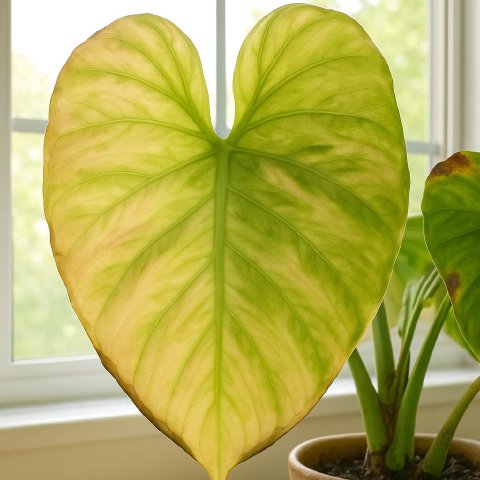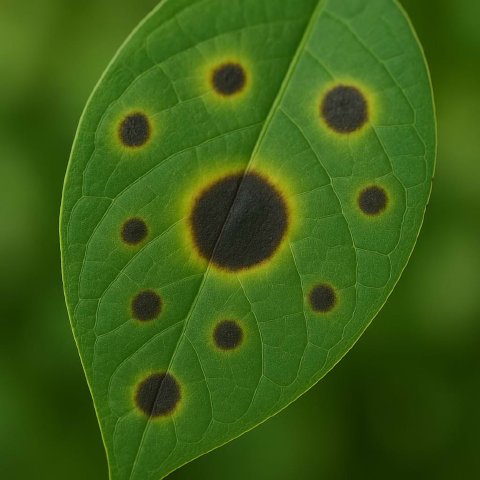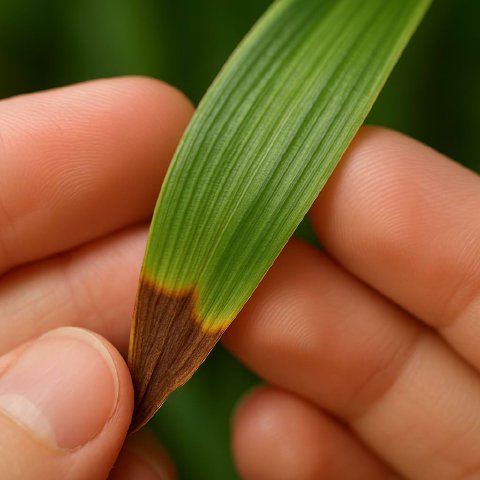🪴 In This Guide 🪴
🎯 Losing Variegation? Let's Diagnose the Problem
Quick Diagnostic Chart
Hello, plant friends! Anastasia here. Did you buy a stunning plant for its beautiful white, pink, or yellow patterns, only to watch the new leaves come in plain green? This frustrating process is called reversion.
Variegation is a genetic mutation that results in parts of the leaf lacking green chlorophyll. Because the green parts do all the work of photosynthesis, the plant is always trying to revert to its more efficient, all-green form. Our job is to create an environment that discourages this.
| If you see… | And the plant is… | It’s definitely… |
|---|---|---|
| New leaves are coming in less variegated or fully green | In a dim corner or far from a window | Not Enough Light (The #1 Cause) |
| A specific stem or branch is now producing only green leaves | N/A | A Reverted Branch (Needs Pruning) |
| New leaves are now almost entirely white or pink | In a very bright spot | Too Much Variegation (Also Needs Pruning) |
🤔 Why Do Plants Lose Variegation?
Survival of the Greenest
Variegation is a beautiful weakness. The white, pink, or yellow parts of a leaf have no chlorophyll, meaning they cannot create energy for the plant. The green parts have to work overtime to support these non-productive, “parasitic” sections.
Because of this, a variegated plant is less efficient than its all-green counterpart. When the plant feels stressed or isn’t getting enough energy from light, it will activate its survival instincts. It will start producing more chlorophyll and all-green leaves because they are much better at photosynthesis. Reverting to green is the plant’s way of making itself stronger and more resilient.
🌿 Top Causes of Reversion and How to Fix It
Cause #1: Not Enough Light
This is the single most common reason for a plant to revert.
- Why it happens: Light is a plant’s food source. In a low-light environment, a variegated plant simply can’t generate enough energy to support its non-green parts. To survive, it ramps up chlorophyll production, causing new leaves to emerge with more green and less variegation, or as solid green.
- How to check: Is your plant far from a window or in a room with limited light? Are the newest leaves the ones with the least color?
- The Fix: Provide more light! Move your variegated plant to the brightest spot you can without giving it direct, scorching sun. An east-facing window is often perfect. For high-variegation plants like a Monstera Albo or Pink Princess Philodendron, supplementing with a grow light is often the best way to ensure they get the energy they need to maintain their stunning colors.
Cause #2: A Dominant Green Stem Has Taken Over
Sometimes one part of the plant decides to go fully green.
- Why it happens: The all-green parts of a plant grow much faster and more vigorously than the variegated parts because they are more efficient. If a stem reverts and starts producing solid green leaves, its rapid growth can quickly shade out and dominate the slower-growing variegated parts, causing the entire plant to eventually become green.
- How to check: Look at your plant carefully. Is there one specific stem or vine that is producing only green leaves, while others are still variegated?
- The Fix: You must prune the reverted growth. Using clean scissors, cut the all-green stem back to the point where it originally branched off from a variegated part of the plant. This removes the dominant green growth and signals the plant to put its energy back into producing the less vigorous (but more beautiful) variegated leaves.
Cause #3: Too Much Variegation
It’s possible to have too much of a good thing.
- Why it happens: Sometimes, a plant will push out a new leaf that is almost entirely white, pink, or yellow. While stunning, this leaf has little to no chlorophyll and can’t support itself. If a plant produces too many of these highly variegated leaves, it can’t create enough energy to survive and may begin to decline. The plant may even try to “self-correct” by producing an all-green leaf next.
- How to check: The newest leaves are almost pure white/pink/yellow with very little green. The plant’s growth may have slowed or stopped.
- The Fix: This is a case where you may also need to prune. To encourage a more balanced and sustainable pattern, prune the stem back to the last leaf that had a good balance of green and color. This encourages the plant to branch from a more stable node.
Cause #4: Other Stresses
While light is the main driver, other stresses can contribute.
- Why it happens: Extreme temperatures, improper watering, or nutrient issues can all stress a plant. A stressed plant is more likely to revert to its tougher, more efficient all-green form as a survival tactic.
- How to check: Are you watering consistently? Is the plant near a draft or heat vent?
- The Fix: Provide stable, consistent care. A happy, stress-free plant is less likely to feel the need to revert.
🛡️ How to Maintain Beautiful Variegation
Best Practices for Colorful Leaves
- Light is Everything: Give your variegated plants the best, brightest (but indirect) light you have. This is the non-negotiable rule.
- Prune Aggressively: Don’t be afraid to cut off any fully reverted green stems as soon as you see them. This is essential maintenance.
- Aim for Balanced Growth: The most beautiful and stable variegated plants have a good mix of green and color on every leaf. This is what you should aim for through careful light management and pruning.
- Buy a Plant with Good Genetics: When purchasing a variegated plant, look for one that shows stable, well-distributed variegation on its existing leaves and stem. This gives you a better chance of success.

